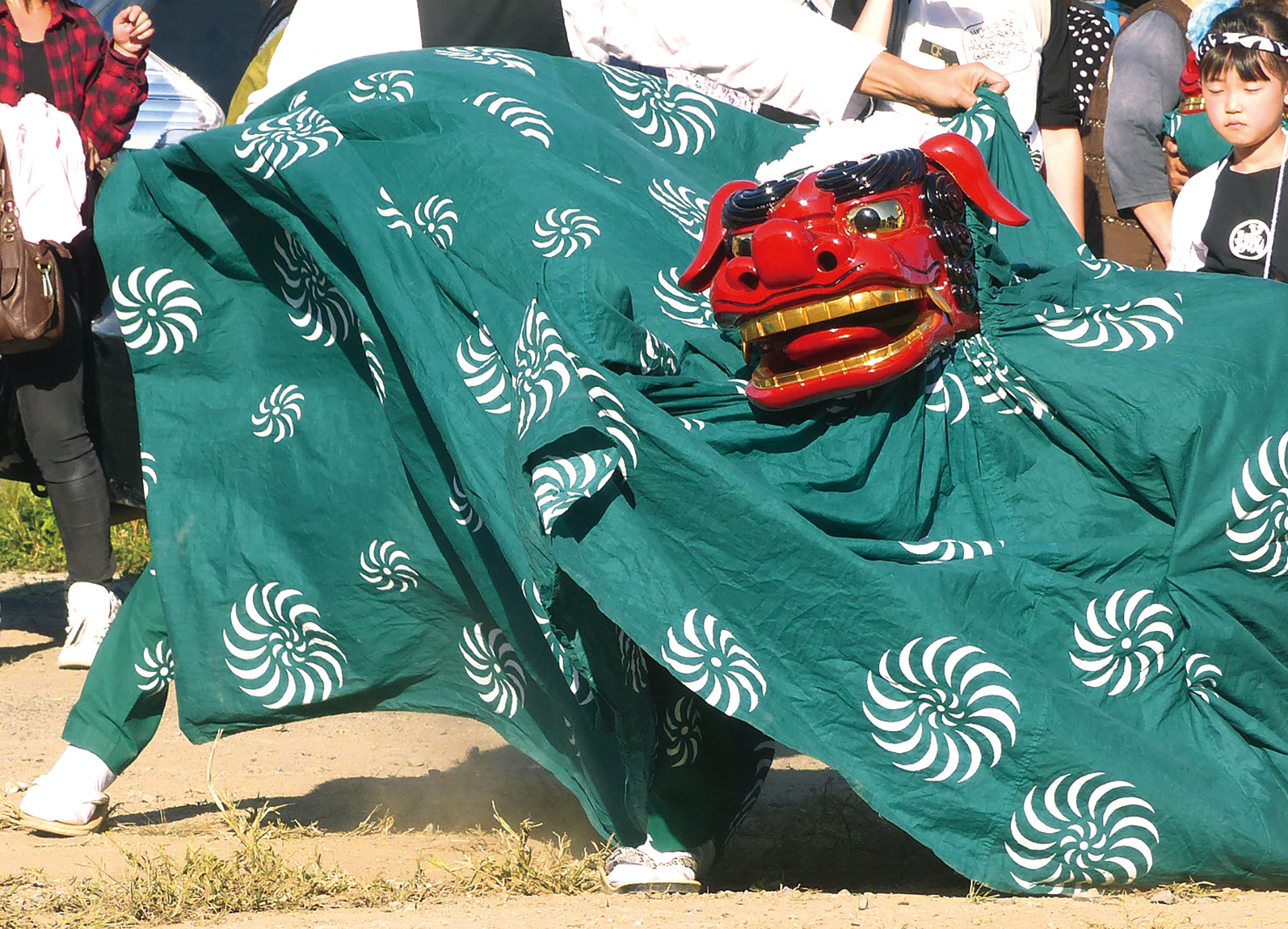城内大神楽
じょうないだいかぐら
Jounai Daikagura
団体名 : 城内大神楽保存会
所在地 : 岩手県大槌町 上町
種別 : シシ芸(三陸国際芸術祭過去出演団体)
寛永年間(1624-1645)、小鎚神社(こづちじんじゃ)が現在地に遷宮鎮座した頃、山伏修験者が伊勢流(いせりゅう)の太神楽(だいかぐら:獅子舞の一種)を「代神楽(だいかぐら)」として陸中閉伊(りくちゅうへい)の七明神に持ち込んだのが始まりとされる説や、大槌代官のすすめで七軒丁(盛岡仙北町付近)から習ったとも伝えられる小鎚神社奉納の大神楽です。演目などは町内他の大神楽とほぼ同じですが、「雌(めす)」の獅子といわれ静かに雅やかに舞うのが特徴です。小鎚神社祭礼の神輿渡御に随行して歩き、門打ち(かどうち:家々をまわって舞う)をします。大震災により被災しましたが支援により屋台や装束など復活させ現在に至ります。
Jonai Daikagura (Otsuchi Town)
There is a theory that Jonai Daikagura started when the yamabushi mountain ascetics brought Daikagura (a type of shishimai) from the Ise school, to Shichimyojin in Rikuchuhei as and acting “Daikagura” when Kozuchi Shrine was relocated to its present location during the Kan’ei era (1624-1645). It is also said that they learned it from Shichikencho (near Senboku Town of Morioka) at the recommendation of a local official. The performance is almost the same as other daikagura performances in the town, but it is characterized by the quiet and elegant dance of the “female” lion. They accompany the procession of mikoshi at the festival of Kozuchi Shrine and perform kado-uchi (dancing around the houses). The festival was devastated by the Great East Japan Earthquake, but with support, the yatai and costumes were restored to their current state.
